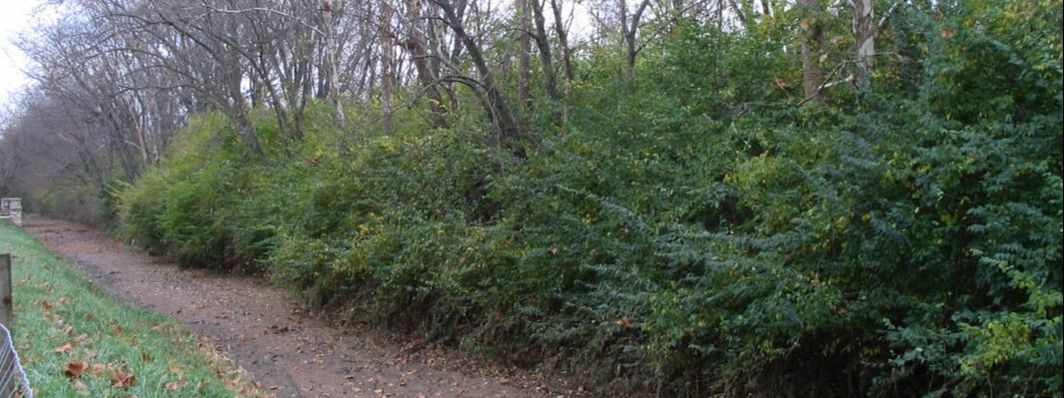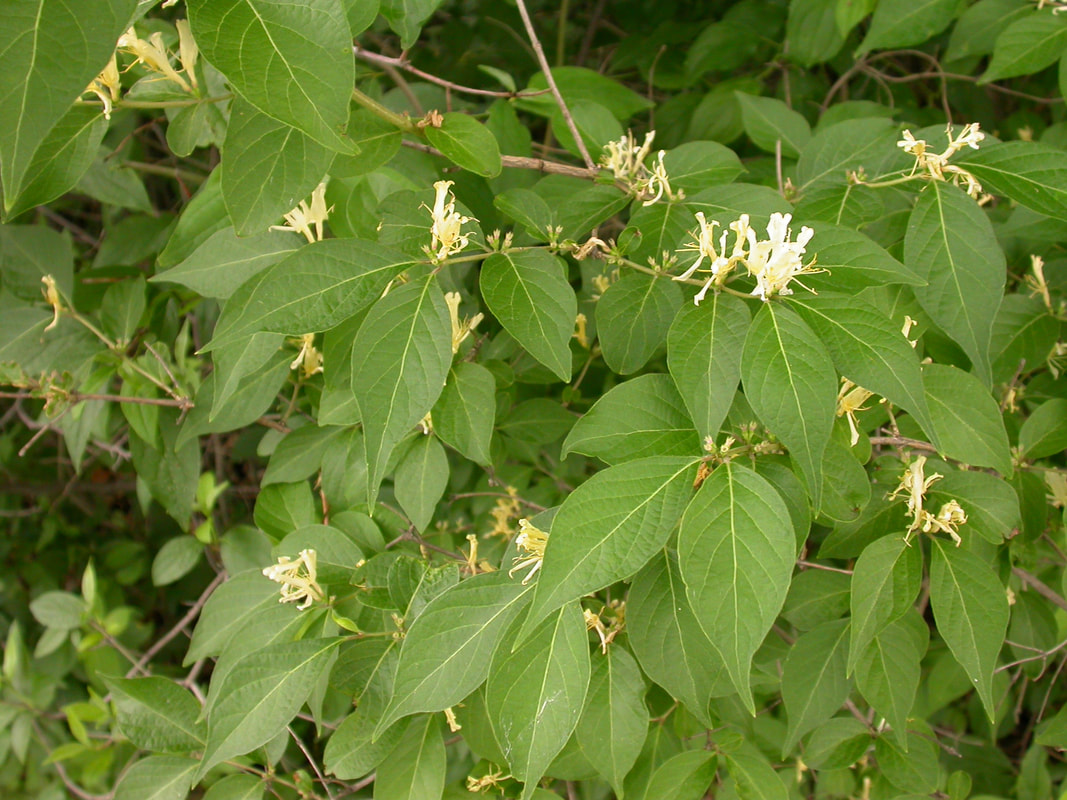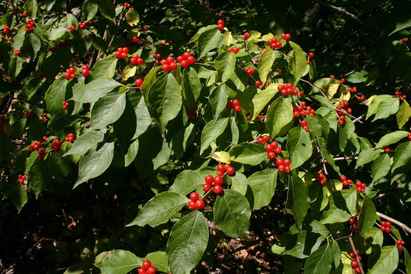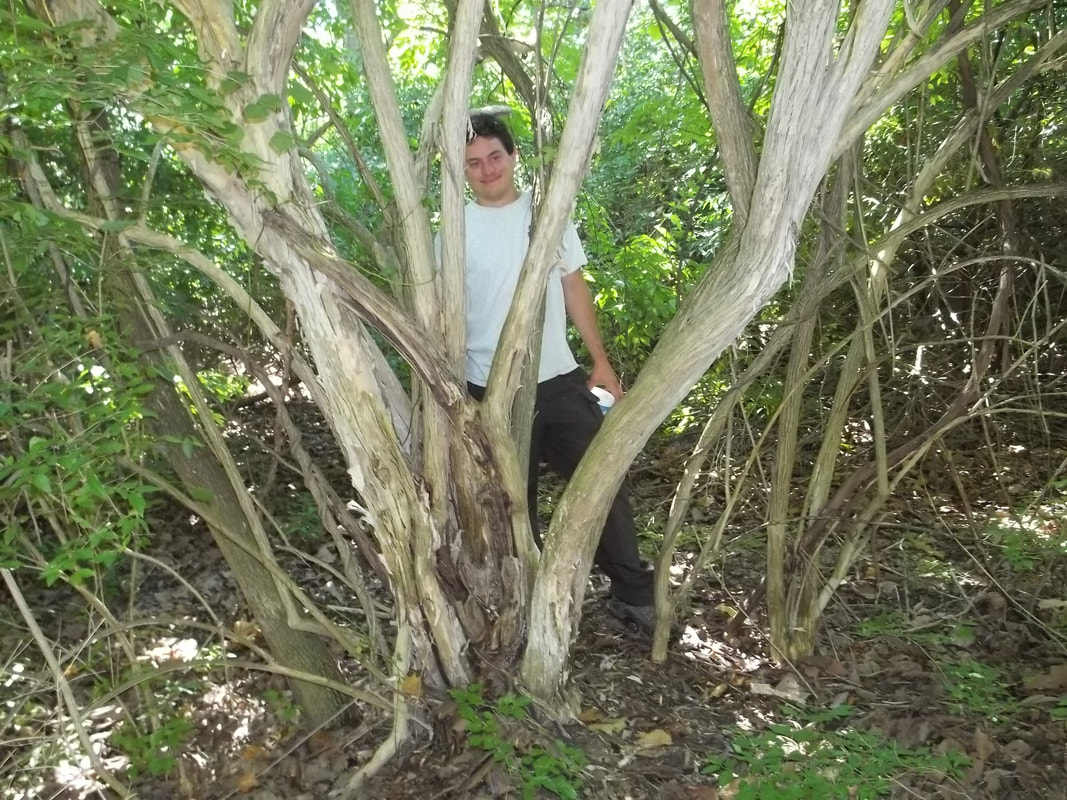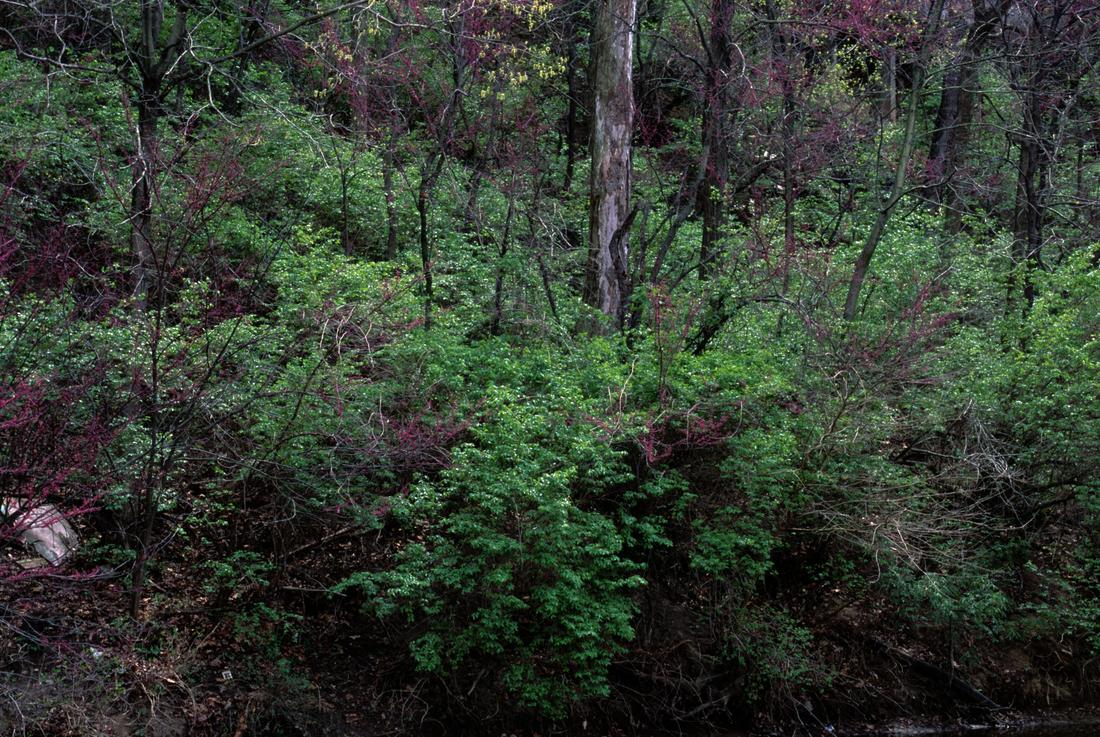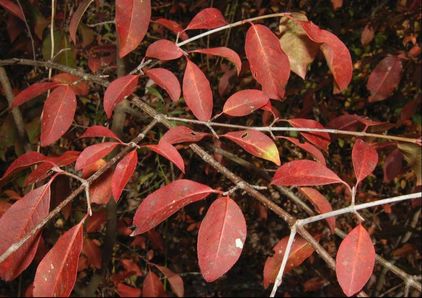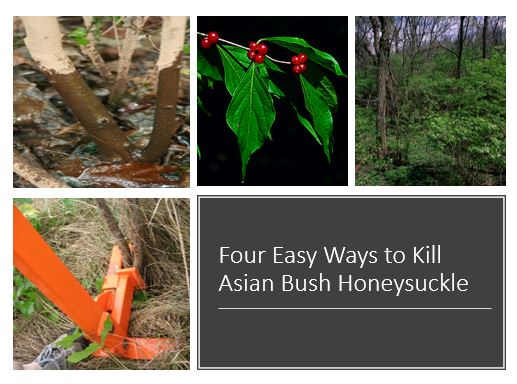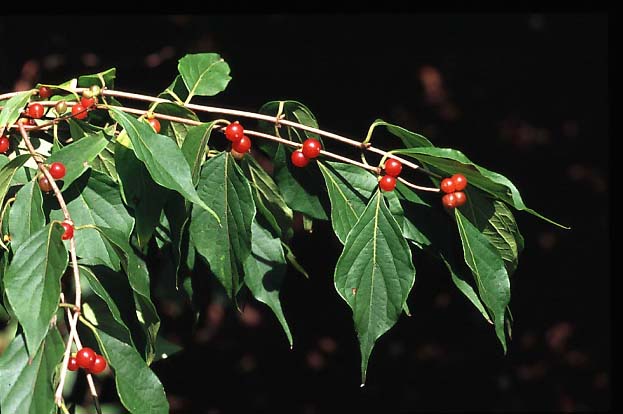|
Asian bush honeysuckle
(Lonicera maackii, L. tatarica, L. morrowii, and L. x bella) Description: These upright shrubs with arching branches are 6-15 feet tall. Each of these species has dark green egg-shaped leaves. They stand out in the understory of forests as the first shrubs to leaf out in the spring and the last to lose leaves in the fall. The paired, tubular flowers are white on Amur and Morrow honeysuckle and pink on Tatarian honeysuckle. Berries range from red to orange and are dispersed by birds. Threat: Rapidly forms a dense shrub layer that excludes native understory shrubs, decreases species richness, reduces canopy tree growth, increases ticks and tick-related illnesses. Asian bush honeysuckle is one of the most common invasive shrubs in Indiana, having invaded thousands of acres across the state. |
Shrubs to Plant Instead of Asian Bush Honeysuckle
Looking for something to plant to replace your Asian bush honeysuckle?
|
Four Easy Ways to Kill Asian Bush Honeysuckle
A detailed summary of simple methods to control Asian bush honeysuckle.
|
Asian Bush Honeysuckle Video
Click here for a brief educational video on Asian bush honeysuckle from Purdue University Extension.
|
